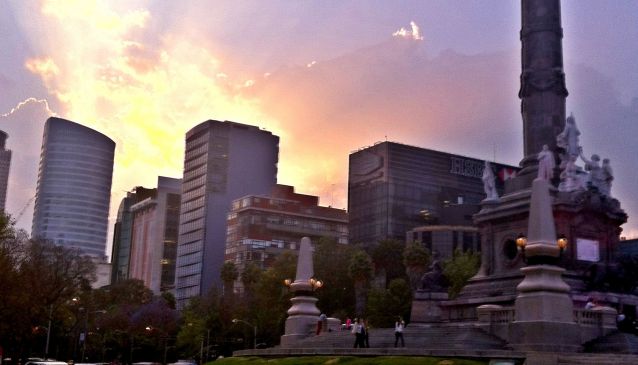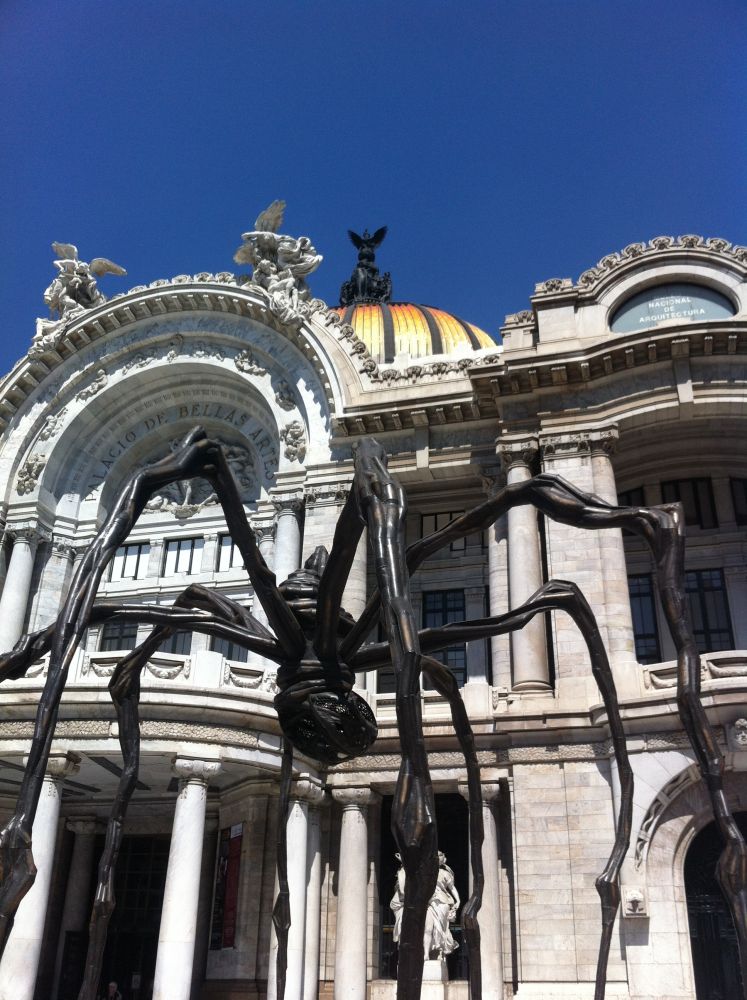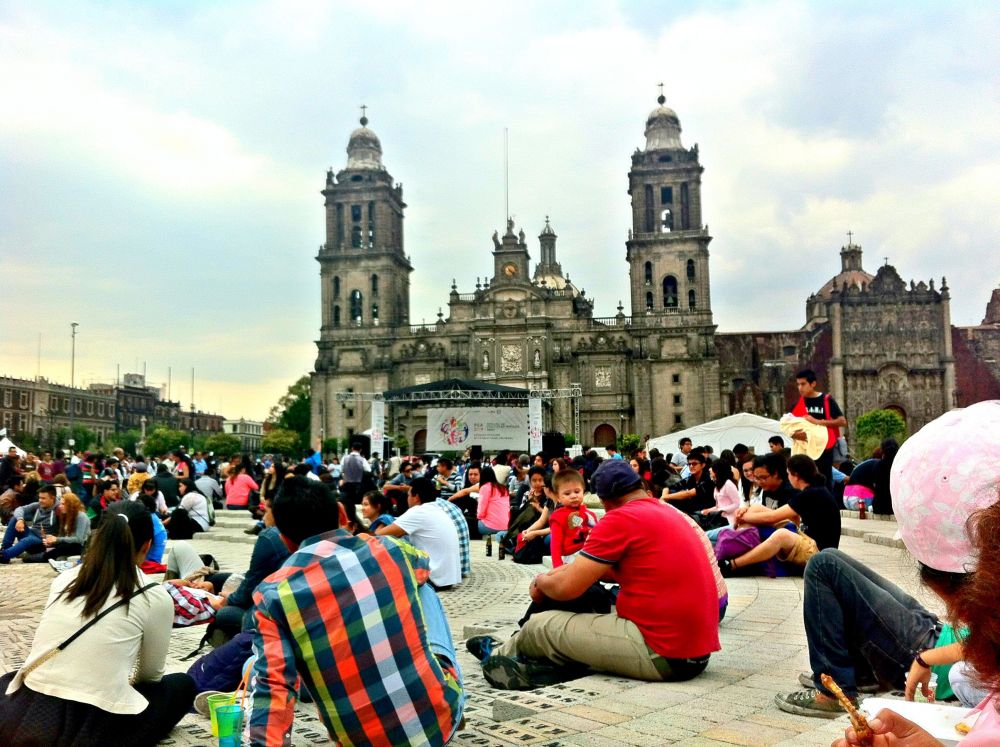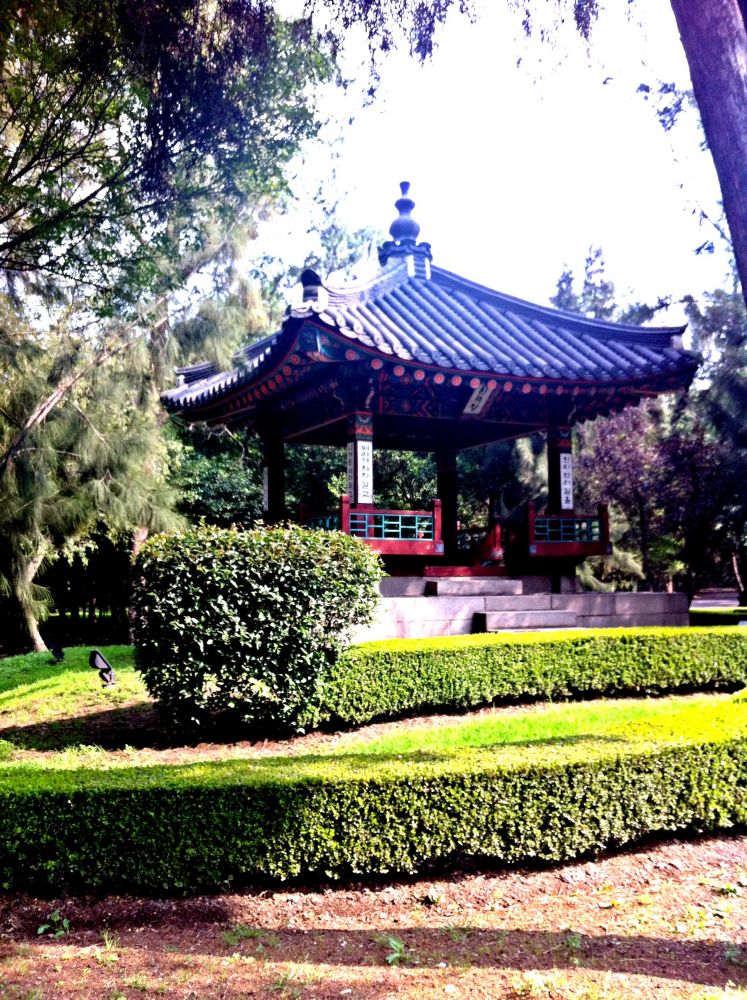10 reasons why Mexico City is an international mega metropolis

Usually defined as an urban center with regional, national and international influence, the so called Global Cities are highly diverse and home to big firms, international corporations, stock exchange markets, great technology, educational centers and modern transportation (Gregorio, 2011). Because of these characteristics and many more, Mexico City recently consolidated its image as a global city. Here are 10 reasons why:
1. Earlier stages: The first peak of Mexico City’s internationalization happened in the 1920s and 1930s, when there was a boom in the arts scene (the most representative, the Mexican Mural Movement) and prominent characters living here such as Diego Rivera, Frida Kahlo and Dolores del Río (who made it to Hollywood) gave Mexico City international fame and recognition. A later climax happened during the 1960s, when it experienced an economic bonanza, its film industry gained international recognition, a students’ movement comparable to the ones in Paris and Prague took place in 1968 and the city hosted the Olympic Games.
2. Global lab: Since 2006, Mexico City’s Government implemented a strategy aimed at solving local problems with global solutions focusing on four main goals: a sustainable city, an innovative and attractive city, an inclusive and progressive city and a city with leadership. Thus, Mexico City’s international cooperation embraces different topics: environment, climate change, sustainable transport, public space, culture, entertainment, sports, tourism, science, technology, gender, sexual diversity, justice, public security and human rights, among others.

Spider: Louise Bourgeois
3. Came to stay: According to a study of the National Institute of Migration, in 2009 there were 82,350 foreigners living in Mexico City with a valid residence permit. Although most of them came from the Americas, especially the US, there are people from basically every country. Foreign migration continues to increase substantially every year, especially the Chinese one which in 2013 overpassed the one from the US.
4. Worth visiting: In 2014, Mexico City received 2,588,458 international tourists and more than 102 thousand international flights landed in the city’s airport. A study named “The Profile of Tourists who Visited Mexico City, 2014” establishes that most of the foreign visitors belong to middle or higher socioeconomic classes and it was their first time in the city. The largest number of tourists came from the United States (20%), followed by Colombia (9.4%) and Venezuela (8.7%). Most tourists visited Mexico City for vacations, 98% said they would come back while 99% affirmed that they would recommend other people to come to Mexico City.
5. The world in one place: Since 2009, Mexico City hosts an annual “Fair of the Friends Cultures”. In 2014, 87 different countries participated with exhibitions of their typical gastronomy, culture, art and crafts. More than 200 free shows were offered and more than 2 million people visited this fair to know the colors, flavors and textures of the world!

Feria de las culturas amigas
6. Asia: Mexico City has the smallest China Town in the world, but it got one! It covers only one block, but it has everything to celebrate Chinese traditions, including a pagoda and more than a dozen delicious restaurants. There is also a Korean Pagoda at Reforma Avenue. Donated in 1968, this replica of a historic pavilion at Seoul’s main park was a gift from the Korean government as a symbol of friendship between both nations. Mexico City also has an amazing Japanese Center which opened in 1959. It has an important cultural center, beautiful gardens and an excellent restaurant. The Lebanese community also has strong presence in this city and in 1962 they established the famous Lebanese Center.
7. Africa: The African community in Mexico is small but very vibrant. In 2001, a group of people from different African countries opened “Casa Africa”, a place aimed at blurring the misconceptions and stereotypes existing in Mexico regarding the African community. Yet, another group established the “Hankili Africa House”, the residence of African writers and artists that serves as a place for exchange of knowledge and culture between African countries and Mexico. Interestingly, in 1979, Mexico gave formal recognition to the Saharawi Arab Democratic Republic before the UN (nowadays, only 80 countries have done so). In 1988 the Saharawi Government set up a Diplomatic Representation in Mexico City and the relations between these two countries have stayed dynamic and friendly.
8. Europe: The links and mutual influence between Mexico and the “Old Continent” are as vigorous as in the former centuries of the colonial period. Thousands of Spanish people have come to Mexico recently (due to the current economic crisis in Spain). The “Cibeles” fountain (a replica of the one in Madrid) has become the meeting point of this extensive community. There is also a French Club with one of the most delicious restaurants of the city, along with many other excellent restaurants run by the French community that fell in love with this city. In addition, every year we celebrate Oktoberfest in Mexico City’s German Club and biergartens, as well as Saint Patrick’s in the many Irish pubs.

Pagoda at Chapultepec
9. Americas: The largest foreign communities in Mexico City come from the Americas, primarily the US. Just to give you an idea, in 2010 near 17 thousand Americans, 14 thousand Colombians and 13,700 Argentinians lived in Mexico City! That is why it is very common to find ALL sorts of American branches and chains, thousands of Argentinians Grills, many Colombian restaurants, Cuban music clubs and even Canadian beaver tails food trucks!
10. Australia: There is also space for such a faraway continent in Mexico City! The academic and cultural exchanges between Mexico and Australia have expanded greatly. “Australian Experience” is an organization in Mexico City aimed at inviting the Mexican youth to study, travel and work in that country, in order to foster mutual influence and cooperation.
The entire world is present in this global city. Thus, it is easy to find a bit of everywhere when travelling to Mexico City. Enjoy an international experience in this global hub!
Sources:
Asociación Mexico Japonesa (Kaikan): http://www.kaikan.com.mx/kaikan/index.php
Australia Experience: http://www.australiaexperience.com.mx/
Casa África: http://casaafrica.org.mx/quienes_somos.htm
Casa Refugio Hankili África: http://hankilisoafrica.com.mx/nosotros/
COPRED (2013) “Personas migrantes, refugiadas y solicitantes de asilo” http://www.copred.df.gob.mx/wb/copred/personas_migrantes_refugiadas_y_solicitantes_de_as
El Financiero: http://www.elfinanciero.com.mx/economia/mexico-vive-segunda-oleada-de-inmigrantes-provenientes-de-china.html
Embajada de la República Árabe Saharahui Democrática: http://www.embajadasaharauimexico.org/rasd-en-mexico/rel-diplomaticas.html
GDF (2011), Ciudad de México. Ciudad Global. Acciones Locales, compromiso internacional: http://www.puec.unam.mx/pdf_cont/ciudad_global.pdf
Maristain, M. (2013) “Ser argentino en México”, en Sin Embargo: octubre 4. http://www.sinembargo.mx/04-10-2013/774605
Gregorio, R. (2011) “Megaciudades y Ciudades Globales”, Pontificia Universidad Católica del Perú: http://www.slideshare.net/ritagandrade/ciudades-mundiales-ciudades-globales
SECTUR DF (2015) “Actividad turística en la ciudad de México indicadores 2007-2014” http://www.mexicocity.gob.mx/general/descargar.php?id=Indicadores_ENE_DIC_2007-2014.pdf
SECTUR DF (2015) “Perfil del Turista que visita la Ciudad de México 2014”, http://www.mexicocity.gob.mx/general/descargar.php?id=EST%20IPN-SECTUR%20DF%20Perfil%20del%20Turista%202014%20Reporte%20Ejecutivo%20VF.pdf
SECTUR DF (2014) “Anuncia Mancera ‘Feria de las Culturas Amigas’ 2014” http://www.mexicocity.gob.mx/contenidos.php?cat=41400&sub=905